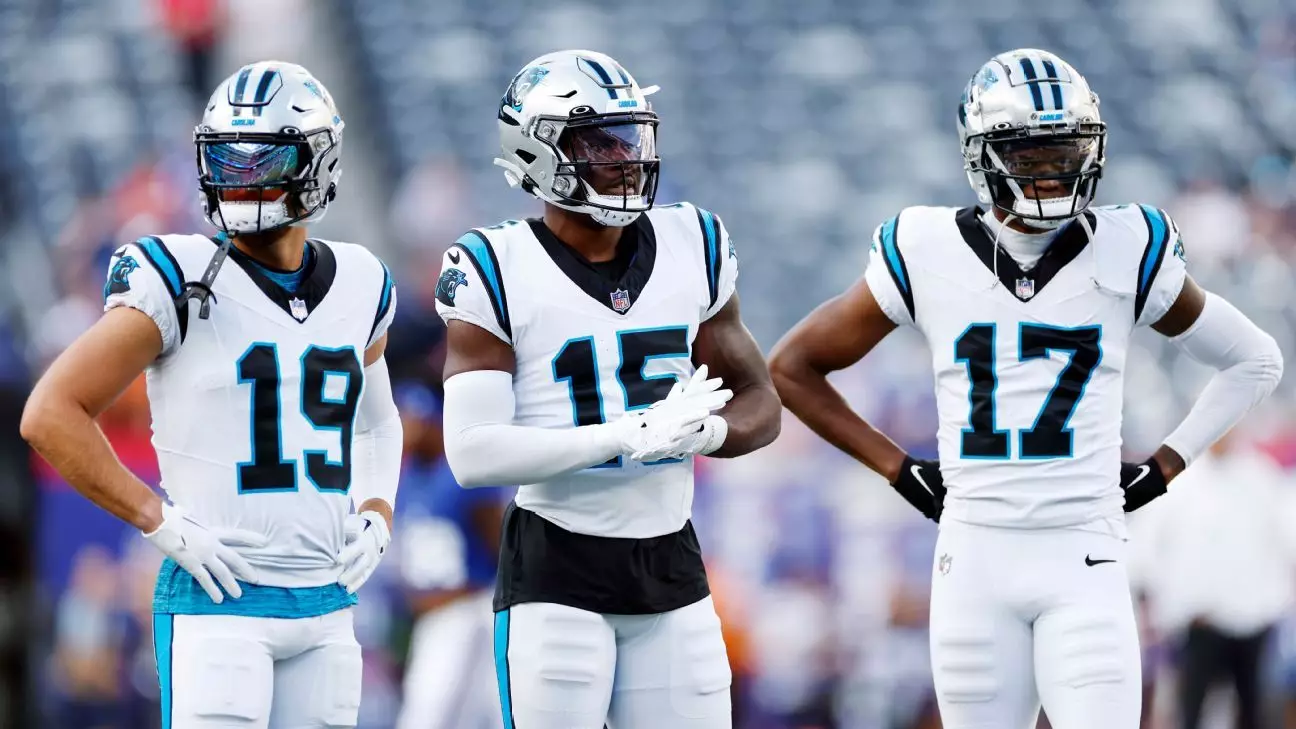For decades, NFL wide receivers have expressed a belief that they look better when wearing low numbers compared to the traditional range of 80 to 89. While this may have initially seemed like a superficial notion, recent scientific research conducted by UCLA researchers reveals that there may be a cognitive basis for this perception. The study, which will soon be published in the journal PLOS One, examines the associations made between numbers and size through the brain’s cognitive process, demonstrating how these associations can influence perception.
The UCLA research team, led by cognitive neuroscientist Ladan Shams, conducted a peer-reviewed study involving subjects who were exposed to images of football jersey numbers. The aim was to measure their perception of the person wearing the jersey based on the number. The study found that subjects were more likely to perceive a slimmer player when presented with smaller numbers. The researchers were initially surprised by this connection, and even more so by its strength and robustness. The correlation between the ratings of size and slenderness and the numbers was significant, even when considering a very small range of numbers, such as 17 to 19.
The Shift in Receiver Numbers
Shams’ interest in this subject was piqued during an interview for a 2019 ESPN story on the migration of NFL wide receivers to numbers between 10 and 19. This shift began with former New York Jets receiver Keyshawn Johnson in 1996 and gained momentum over the years. In 2004, the NFL officially relaxed its rules on eligible receiver numbers, leading to approximately 80% of receivers wearing numbers between 10 and 19 by 2019. It is worth noting that subsequent rule changes now permit receivers to wear numbers from 0-49 and 80-89.
When interviewed by ESPN, receivers offered various explanations for their preference for lower numbers. One common theme emerged in their responses: the image they believed a number between 10-19 would convey. Emmanuel Sanders, a former NFL wide receiver, mentioned that numbers in the 80s were typically associated with larger players, while smaller receivers would feel out of place wearing them. Keyshawn Johnson himself suggested that numbers actually influence perceptions of players in other positions. For example, he pointed out that Brett Favre’s No. 4 created an illusion of agility and versatility, despite his actual capabilities. Conversely, Johnson argued that Sam Darnold’s athleticism appeared diminished due to his choice of No. 14.
The Cognitive Basis of Number Perception
ESPN reached out to Ladan Shams to explore the potential psychological reasons behind the influence of lower numbers on perception. Shams hypothesized that the human brain could make a connection between a small number and a slender body type, yet there was no available research to support this hypothesis at the time. However, during the COVID-19 pandemic, Shams focused her attention on testing this hypothesis. Her research group conducted two exercises: one virtual and another in person. The subjects were asked to rate players with different jersey numbers based on their perceived level of slenderness. The findings showed that observers indeed perceived athletes with lower jersey numbers as leaner compared to those with higher numbers.
Implications Beyond Football
The implications of this research extend far beyond the realm of football. According to Shams, these findings can provide valuable insights into how the brain forms implicit biases that affect decision-making processes. The brain’s ability to recognize patterns and regularities in numbers and size is not limited to football jersey associations. These same learning mechanisms can give rise to implicit biases in various domains of life. By understanding these biases, we can work towards mitigating their effects and promoting more objective decision-making.
The UCLA study on the influence of football jersey numbers on perception sheds light on the cognitive processes that underlie our associations with numbers and size. The research demonstrates that the brain establishes implicit biases based on these associations, which can impact decision-making in numerous areas of life. The insights gained from this study provide opportunities to better understand and address the mechanisms of implicit bias, paving the way for a more equitable society.


Leave a Reply